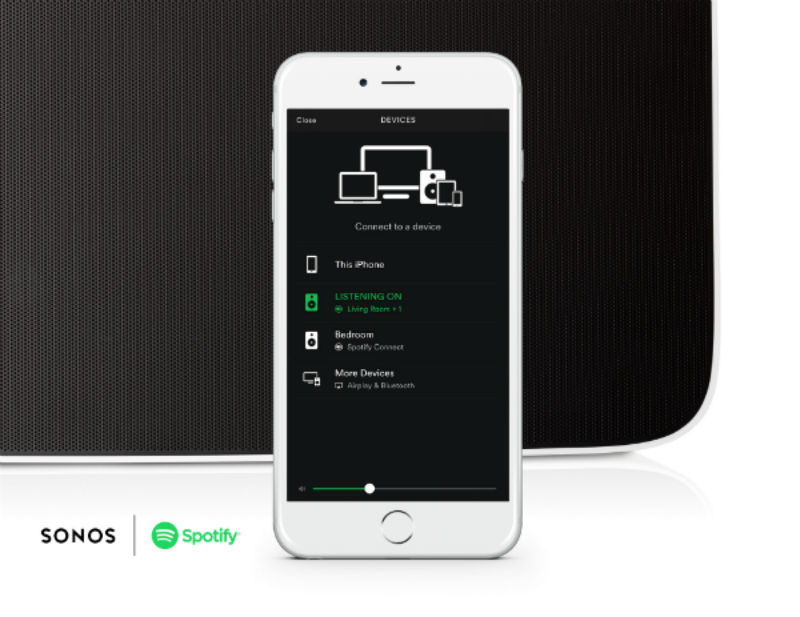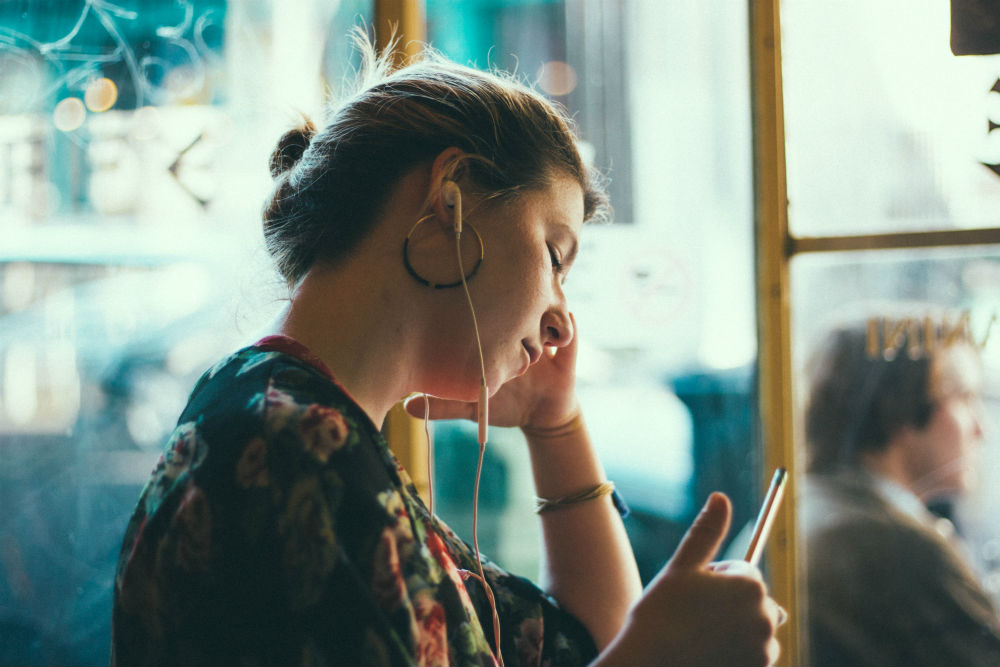Instead of music, more and more podcasts, news articles and curated radio broadcasts are reaching the listeners’ ears. To give you an idea of where the audio journey is taking us, we introduce you to current trends and upcoming developments and deal with the whys and wherefores of audio consumption.
Connected Audio
In order to create a long-lasting listening experience, it is crucial that the individual devices are networked with one another. Affordable smart home systems already provide connectivity between smart speakers, sound systems and vendors, such as Spotify, iTunes or Amazon. And multi-room speakers make it possible to play content throughout your home.
To date, the smartphone has served as a central control organ through which the connections are made. But the trend towards an extended spacial and flexible sound experience means it won’t be long before playing becomes automatic, functioning without the active control of the speakers. Using GPS or other systems, locating the listener’s position in the flat or house shouldn’t be a problem, and the listener can be followed by the music as they move through their home.
It would also be conceivable to transfer audio content across locations via several devices. Imagine listening to the broadcast of a football game in the car, then through your headphones on the way to the house, and then directly via the home system in the living room – all in one seamless transition. The connectivity of individual devices and systems will play a key role in the audio sector in the future.

Listening is social
Speakers are very popular since they not only allow freedom of movement while listening, but also provide a shared listening experience. A good podcast for instance can connect two flatmates in an apartment, while they busy themselves with completely different activities. Such a bond does not have to be limited to two people in one another’s immediate vicinity. For listeners of traditional radio stations, the presenter’s voice is part of the daily routine in the morning and connects many listeners within a region.
With the Web, shared listening and an exchange of opinions on the content has already become easier. But opportunities for interaction often leave much to be desired. For example it should be possible to leave comments and likes while listening to a podcast or to see who’s listening from the fan base. Spotify and Deezer do offer rudimentary functions along these lines. It remains to be seen how this will develop. Perhaps a kind of Instagram for music, with the individual soundtrack of ones own life?
The prospects for live audio events – on similar lines to public viewing – are promising. This could be either on location or live-stream, a live broadcast of a concert or a collection of fans listening to the new album of their favourite band together.
Thus, publishers and editors should not simply view audio as an additional mode. It is also a way to interact with readers and listeners. Inspiration and orientation can be taken from classic radio formats such as live broadcasts with recorded calls or voice messages.
Immersive Audio
Audiobooks and radio plays are well-known and effective forms of immersive audio content. Voices, music and sounds alone can create an event in the mind of the listener and let them sink into another world. The sense of ‘being there’, however, is strongly dependent on the voice of the speaker or the quality of the sound effects. But even here there is movement. At the latest, when computer voices, such as Alexa or Siri, are established in a broad user field and – thanks to the numerous available data – speaking better and more naturally, the audio contributions will become much easier and more cost-effective to produce. It is certainly in the interest of editors and companies to be open to such developments.
A more convincing form of immersion, however, is offered by the game world. Thanks to VR goggles and AR technology, players are not only mentally but, with the help of motion sensors, also, so to speak, physically transferred to another world. New recording techniques for 360-degree audio sound and the corresponding sound systems can complement this experience with the perfect sound world.
Immersive audio goes far beyond the gaming world. Certain sounds or music can actively influence the mood of the user. Such concepts are already standard especially in the advertising industry.
Mobile Audio
Basically, this trend began with the Walkman. Consuming audio content on the go is not new. Independence of location, network, and WLAN will make listening much easier in the future – along with the transition from car radio to home systems etc.
New headphone technologies are required here, which not only compensate for external noise and provide very good sound quality, but also allow voice interactions and integrate functions of other wearables. What about headphones that make statements about fitness or eating habits? Music could be automatically adjusted to suit the sports activity. Or useful tips could be given when relevant, for instance to let you know when your running pace is uneven.

Individual Audio
Algorithms that create news feeds according to the user’s interests are already being used in online shops, on Facebook and in streaming services at Netflix and Spotify. Providing users with suggestions for songs and other audio material, however, is only the first level of individualization. Custom audio content, for example, could go so far as to enable voices, background music and sounds to be interchanged as desired.
Still, it can’t hurt to give individual audio lists a breath of fresh air and occasionally break through the filter bubble phenomenon. GPS localization can help here. If the user is at a particular location, they will be offered regional podcasts or individual audio features on the area and current local events. Additionally, such models provide space for advertising and product placement, which can also finance the audio features.
User-generated content has long been a standard in blog, social media and video platforms. On the audio front, on the other hand, it’s still pretty quiet. Taking a cue from free radio stations, more platforms could be created in the future to offer ones own podcasts and audio contributions privately or publicly. The recording and sound quality of the new smartphones already provide good technical prerequisites. And suitable apps are also available that allow you to cut and edit your own contributions and add sound effects.
Outlook for the future
Audio is a fast-growing trend that will continue to inspire technical and content innovations in the coming years. Whether in the form of intelligent headphones, location-based playlists or customizable contributions, companies, content providers and marketers would do well to keep an eye on these developments and be brave enough to risk an experiment or two in the field. In the next post, we’ll take a closer look at opportunities in the audio sector.
